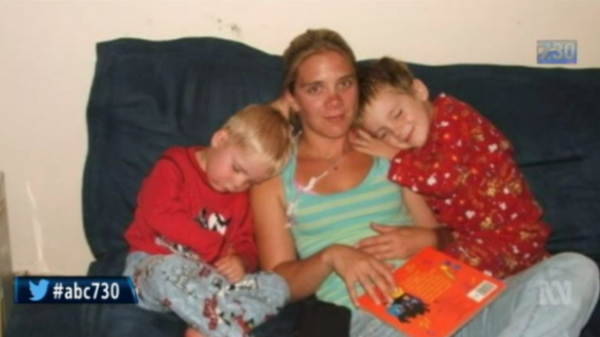
“Yep you need to pull yourself together and help your sister.” These were among the words spoken by the Triple Zero Ambulance operator to Rikki Schmidt, the sister of Canberra mother Tara Costigan when she called the emergency line as Ms Costigan lay dying after her former partner, Marcus Rappel, had struck her with an axe.
Without confirming that an ambulance was on the way, and after learning from Ms Schmidt that Ms Costigan had been hit in the neck with an axe, the operator asked the distressed Ms Schmidt a series of questions including: “How did it happen?”, “What injuries does she have?”, “Can you describe it [the neck wound] in more detail, please?”
The telephone call was recorded and played in court and on the ABC news last night (full transcript below). While Rappel has pleaded guilty to the murder, he was back in court yesterday because he is disputing aspects of the prosecution’s case.
Ms Schmidt and other members of the Costigan family discussed the events of that terrible afternoon on ABC 7.30 last night.
RiotACT contacted the Emergency Services Agency and Minister for Emergency Services Simon Corbell to ask them about the telephone call and its aftermath, the protocols operators are required to use in dealing with calls and the training they receive.
The ESA told ABC radio this morning: “Out of respect to the Costigan family and the ongoing court case it would not be appropriate to discuss further”.
Mr Corbell responded with the following statement:
“The ACT Ambulance Service responds to approximately 37,000 “000” telephone calls each year and all calls are taken very seriously.
The ACT Ambulance Service begins the dispatch process almost immediately while keeping the caller on the line to answer questions about the emergency.
Call-takers must ask a series of questions to establish the most appropriate response, and answers to these questions enable the call-taker to provide more detailed pre-arrival advice to the dispatched intensive care paramedics.
The common misconception is that the person taking the call also dispatches the ambulance and coordinates other resources. This is not the case. While the call taker continues to ask questions a dispatcher can see the case and dispatch the closest available ambulance.
While the call taker continues gathering information and the dispatcher is sending an ambulance, other staff in the communications centre are coordinating with and contacting other agencies including ACT Fire & Rescue and ACT Policing.
The ACT Ambulance Service provides a valuable service to the community, and 97% of “000” calls are answered within 10 seconds. The ACT Ambulance Service also has the fastest response times in Australia.”
FULL TRANSCRIPT OF CALL
After Ms Schmidt was transferred to Ambulance emergency, the operator initially asked: “What address?”
Ms Schmidt responded: “38 of 12 Duggan Street. My sister has been hit in the neck with an axe.”
The call continued:
Operator: “I need your phone number.”
Ms Schmidt: “I don’t have time, my sister’s been hit in the neck with an axe!”
Operator: “How did it happen?”
Ms Schmidt: “Oh, just, can you please hurry up! My sister’s been …”
Operator: “We are hurrying. This is all part of the process that everyone has to go through when they call us. Can you please explain to me how it happened.”
Ms Schmidt: “My sister’s ex-boyfriend [inaudible] came with an axe.”
Operator: “What injuries does she have?”
Ms Schmidt: “She’s got a massive wound on her neck.”
Operator: “OK can you describe it in more detail, please?”
Ms Schmidt: “No, I don’t. She’s hardly breathing. Hurry up!”
Operator: “Yep you need to pull yourself together and help your sister.”
Ms Schmidt: “[Inaudible] … But why did he do this?”
Tara Costigan was dead before the ambulance arrived.
If you are concerned about your own or another family being at risk of domestic violence, please contact the National Family Violence counselling service on 1800 737 732.












